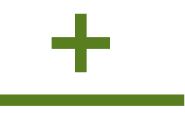The front-end engineering design, or FEED, phase plays a crucial role in preparing capital projects for successful execution. Beyond providing an accurate cost estimate, front-end engineering design helps establish a robust scope definition, budget, and timeline while identifying risks.
Key objectives of front-end engineering design include the following:
- Develop engineering packages.
- Evaluate any potential design options that may improve return on investment (ROI).
- Conduct hazardous operations reviews to improve safety outcomes.
- Support internal funding approval processes.
- Provide a framework that can be referenced and checked against as the project progresses through the engineering and construction phases of the project.
By investing in the front-end engineering design process upfront, project risks and uncertainty—particularly those associated with budget and schedule—can be greatly reduced while creating value that lasts throughout the entire project life cycle.
Construction project benchmark studies demonstrate that when front-end engineering design studies are performed, projects can benefit from up to a 30% reduced cost in addition to shorter project execution times.
Front-end engineering and design, often synonymous with basic engineering, is the third phase of the stage gate process (FEL 3) that follows a conceptual design or feasibility study. The front-end engineering and design process can be done standalone to allow the project owner to competitively bid detail engineering and design and construction or as part of a formal stage gate process. In other words, it can serve as the foundation for the detail engineering and design phase or a full engineering, procurement, and construction (EPC) project delivery approach.
Through a properly executed front-end engineering design, project owners are likely to see benefits such as:
- Lower life cycle costs.
- Reduced technical schedule and cost risks.
- Faster time to achieve faster plant or process start-up, commissioning, and turnover.
- Improved risk identification and mitigation.
- Reduced health, safety, and environmental (HSE) risks.
Beyond providing an accurate cost estimate, this process produces valuable deliverables that retain value through project execution. Below, we provide information on common front-end engineering design deliverables.
Common Front-End Engineering Design Deliverables
All capital projects are unique, and the depth and level of detail for deliverables depend on the project owner’s needs and demands. However, the front-end engineering design process is relatively standardized; consequently, there are typical deliverables during this process. A comprehensive list of potential front-end engineering design deliverables is listed below.
It’s important to note that the concept (FEP 1) and feasibility (FEP 2) phases have already developed foundational deliverables such as PFds, P&IDs, etc.
Standard Front-End Engineering Design Deliverables
Preliminary:
Overall
- Scope of Work
- Project Schedule (level 2)
- Total Installed Cost (TIC) estimate
Process
- Pressure Safety Valve (PSV) sizing
Civil/Structural
- Structural Design and Analysis/Sketches
- Building Plans and Elevation
Instrumentation and Electrical
- Distributed Control System (DCS) I/O count
- Spec sheets
Issued for Design (IFD):
Process
- Process Flow Diagrams (PFDs)
- Block Flow Diagram
- Heat and Material Balance (H&MB)
- Process Drawing List
- Piping and Instrumentation Diagram (P&ID)
- Hydraulic Study
Mechanical/Piping
- Plot Plan
- Equipment Arrangement Plan
- Utility Requirements
- 3D Model/Piping Plans
- Line List
- Tie-In List
- Tie-In Location Plan
- Global Material List
- Major Equipment List
- Purchase-Ready Equipment Data Sheets
- Major Equipment Process Data Sheets
- Outline Drawings
- Bid Tab for Major Equipment
- Vendor Data Sheets
Civil/Structural
- Foundation Location Plan
- Foundation Sketches
- Steel/Concrete Estimation
Instrumentation/Electrical
- Single-Line Diagrams (SLDs)
- Instrument Index
- Major Electrical Equipment Details
- Block Diagrams
- Electrical Area Classification (EAC) Plans
- Cause and Effect (Hazard and Operability Analysis (HAZOP))
- Motor List
*Note: Standard deliverable may vary depending on client requirements, provided items, project drivers, characteristics, and risk.
Optional/Early Front-End Engineering Design Deliverables
- 3D Laser Scan
- 3D Model
- Hazard Analysis
- Flare Load Summary
- Sewer System Definition
- Operating Guidelines
- HAZOP Report
- Updated Design Basis
- PSV Distribution Study
- Equipment Insulation Requirements
- Equipment Specification Sheets
- Demolition Drawings
- Piping Insulation Schedule
- Fire Water System Design
- Process Sewer System
- Pipe Support Details
- Pipe Stress Analysis
- New Soil Study
- Contaminant Calculations
- Safety Control System
- Identify Substation, Transformer, or Feeder Needs
- Constructability Review
*Note: Optional deliverables are contingent upon project scope and client requirements, and early deliverables depend on client priorities and specific project needs.
H+M: Planning Ahead to Keep You Ahead
Whether your capital project requires a formal stage gate process—or you are looking to improve project outcomes by investing in front-end engineering design—H+M Industrial EPC has all the in-house tools, resources, and capabilities to help guide your project to the best project decisions.

The H+M Industrial Team
For over three decades, we have provided best-in-class capital project management services to Energy and Chemical industries through our proven EPC approach. We are dedicated to providing trust, experience, and efficiency through all stages of engineering, procurement, and construction--on budget and on time.

Partnering with H+M Modular
H+M Modular, a division of H+M Industrial EPC, specializes in custom fabricated equipment, modules, and skids for energy and chemical industries. The approach emphasizes the potential for decreased risk through more controlled fabrication, leading to enhanced quality and safety, reduced labor costs and construction times, improved labor availability, and solutions to geographic challenges. We are dedicated to providing trust, experience, and efficiency through all stages of traditional and modular construction projects using our proven EPFC approach, If you're considering modular fabrication, we invite you to connect with us to learn about how modular solutions can improve project outcomes.






